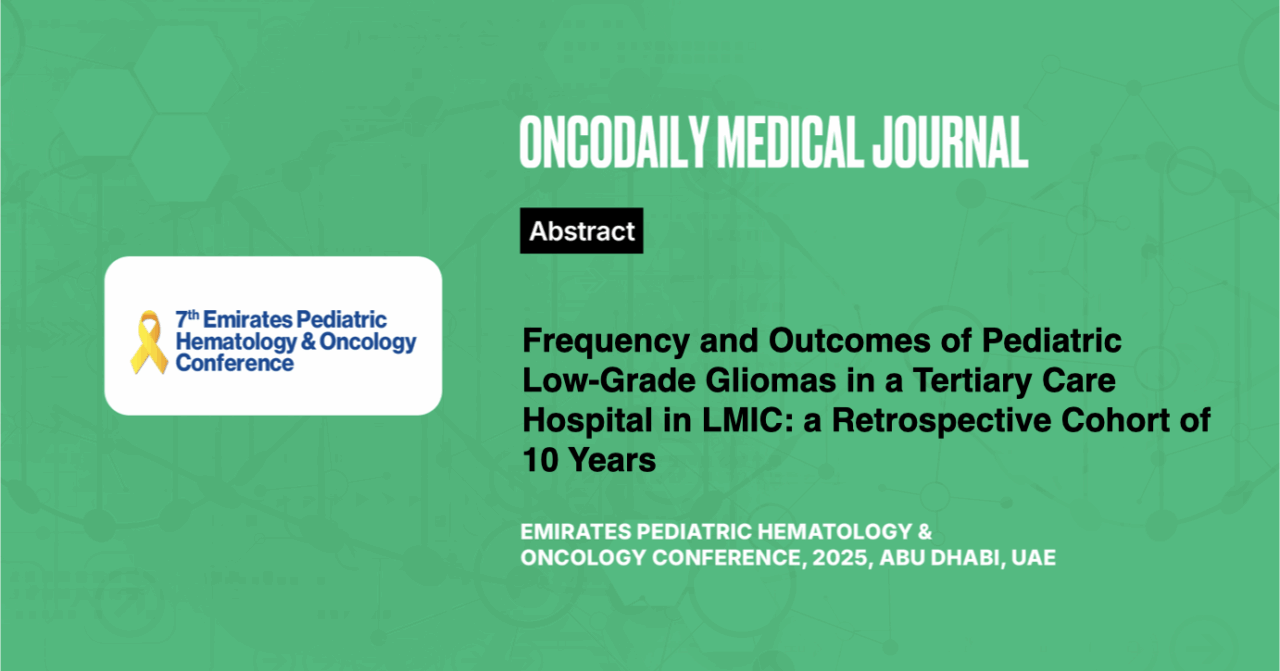Frequency and Outcomes of Pediatric Low-Grade Gliomas in a Tertiary Care Hospital in LMIC: a Retrospective Cohort of 10 Years
Abstract
Introduction: Central Nervous System tumors are the most common solid form of malignancy in children. One-third of these cases are due to Gliomas, with two-thirds of these gliomas being categorized as Low-Grade Gliomas (LGG) in the pediatric population. Out of these gliomas, the most prevalent one is WHO grade 1 pilocytic astrocytoma, making up 65% of all the cases. In this retrospective cohort study, we aim to review all cases of pLGG that were presented at Aga Khan University Hospital over the past 10 years.
Methodology: Data was collected retrospectively between 2013 and 2023. Patients aged 18 and younger diagnosed with LGG were included, and 176 patients were identified. Biopsy-proven low grade gliomas were included. Non-biopsy-proven optic pathway gliomas, subependymal giant cell astrocytoma (SEGA), and tectal plate gliomas were also included. Overall survival (OS) was measured five years after the diagnosis. The ethical review committee of AKUH approved this study.
Results: One hundred and seventy-six patients were identified with a slight male predominance (51.7%). Most of the patients (50%) were 10-18 years of age. The most common presenting complaint was headache followed by vomiting (median duration of symptoms: 2.5 months). Most of the patients had a supratentorial tumor (60.1%). One hundred and forty-six patients had surgery: majority were pilocytic astrocytoma (61%). Thirty patients did not have surgery: 27 SEGA, 5 OPG, and 4 tectal plate glioma.
Six patients had disease relapse, and 30 patients had disease progression. Follow-up disease status was unknown for 37 patients. Five-year OS for all LGG patients was 96.6% with only six events (median survival: not reached). Of all the 170 censored patients, four were referred to another center, and thirty-three patients were lost to follow-up.
Demographically speaking, age, radiation exposure, ethnicity, and socioeconomic status also have shown some correlation with the development of pLGGs. These tumors most commonly affect the cerebellum or posterior fossa, followed by cerebral hemispheres. Other locations consist of optic pathways, seen in NF-1, brainstem, and even other midline structures. Treatment strategies primarily focus on volume reduction of the tumor A gross total resection (GTR) of the tumor often means the patient is cured of the disease with a significantly improved survival.
Conclusion: Our cohort demonstrates an excellent survival of low-grade glioma patients with over 96% survival as compared to other low- and middle-income countries. Although LGGs are only one group of pediatric CNS tumors, they represent a substantial proportion of these tumors. This study also underscores the need for more robust data on outcomes in pediatric CNS tumors.





